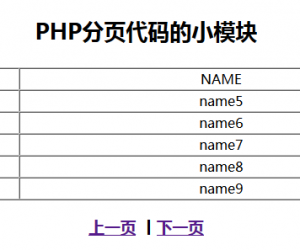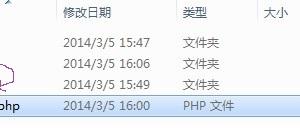Magento 开发笔记5
发布时间:2015-05-27 19:30:42作者:知识屋
上次我们创建了weblogpost的模型。这次,我们执行直接执行CREATE TABLE。我们将未我们的module创建一个Setup Resource,而该资源会创建一个表格。我们同时也会创建一个升级的脚本,它能升级已经安装的module。总的来说
1. 在config里增加SetupResource
2. 创建resourceclass文件
3. 创建installerscript
4. 创建升级script
增加Setup Resource
我们在<resource/>部分增加下面的
<resources>
<!-- ... -->
<weblog_setup>
<setup>
<module>XStarX_Weblog</module> <class>XStarX_Weblog_Model_Resource_Mysql4_Setup</class>
</setup>
<connection>
<use>core_setup</use>
</connection>
</weblog_setup>
<!-- ... -->
</resources>
<weblog_setup>标签是用来唯一表示SetupResource的。通常鼓励使用modelname_setup。<module>XStarX_Weblog</modul>标签下应该包含我们模块的Pachagename_Modulename。最后<class>XStarX_Weblog_Model_Resource_Mysql4_Setup</class>应该包含我们要创建的Setup Resource类的名字。对于基本的脚本来说,没有必要创建自己的类,但是这么做,以后可以更灵活。
增加完配置后,清除cache,并且加载Magento Site,你会发现出异常了
Fatalerror: Class 'XStarX_Weblog_Model_Resource_Mysql4_Setup' not found in
Magento试图实例化我们在config里声明的类,但是没有找到。我们需要创建这样的类文件app/code/local/XStarX/Weblog/Model/Resource/Mysql4/Setup.php
classXStarX_Weblog_Model_Resource_Mysql4_Setup extendsMage_Core_Model_Resource_Setup { }
现在重新加载Magento网站,异常就消失了。
创建安装脚本
接下来,我们要创建安装脚本。脚本包含了之前的CREATETABLE语句。
首先,先看一下config.xml
<modules>
<XStarX_Weblog>
<version>0.1.0</version>
</XStarx_Weblog>
</modules>
这个部分在配置文件中是必备的,标示了module的同时也告诉了版本。安装脚本要基于版本好。在下列位置创建文件
app/code/local/XStarX/Weblog/sql/weblog_setup/mysql4-install-0.1.0.php
echo 'Running This Upgrade: '.get_class($this)."/n<br /> /n";
die("Exit for now");
路径的weblog_setup部分匹配了config.xml文件<weblog_setup/>。0.1.0部分匹配了module的版本。清除缓存,加载页面,可以看到
Running This Upgrade:Alanstormdotcom_Weblog_Model_Resource_Mysql4_Setup Exit for now ...
这意味着我们的update脚本执行了。最终我们把SQL更新文件放在这里,但是暂时我们把精力放在setup机制上。把die声明去掉,
echo 'Running This Upgrade:'.get_class($this)."/n <br /> /n";
重新加载页面,可以看到升级消息在页面的首部分展示。重新加载,页面将恢复正常。因为setup就一次嘛。不可能总setup。
创建安装脚本
MagenoSetup Resources容许我们简单的放置安装脚本和升级脚本,然后系统就会自动执行。这容许我们系统中的数据迁移脚本保持一次。
使用database client,查看core_resroucetable
mysql> select * from core_resource;
+-------------------------+---------+ |code | version |+-------------------------+-----+
|adminnotification_setup | 1.0.0 |
| admin_setup | 0.7.1 |
| amazonpayments_setup | 0.1.2 |
| api_setup | 0.8.1 |
| backup_setup | 0.7.0 |
| bundle_setup | 0.1.7 |
| catalogindex_setup | 0.7.10 |
| cataloginventory_setup | 0.7.5 |
| catalogrule_setup | 0.7.7 |
| catalogsearch_setup | 0.7.6 |
| catalog_setup | 0.7.69 |
| checkout_setup | 0.9.3 |
| chronopay_setup | 0.1.0 |
| cms_setup | 0.7.8 |
| compiler_setup | 0.1.0 |
| contacts_setup | 0.8.0 |
| core_setup | 0.8.13 |
| cron_setup | 0.7.1 |
| customer_setup | 0.8.11 |
| cybermut_setup | 0.1.0 |
| cybersource_setup | 0.7.0 |
| dataflow_setup | 0.7.4 |
| directory_setup | 0.8.5 |
| downloadable_setup | 0.1.14 |
| eav_setup | 0.7.13 |
| eway_setup | 0.1.0 |
| flo2cash_setup | 0.1.1 |
| giftmessage_setup |0.7.2 |
| googleanalytics_setup | 0.1.0 |
| googlebase_setup | 0.1.1 |
| googlecheckout_setup | 0.7.3 |
| googleoptimizer_setup | 0.1.2 |
| ideal_setup | 0.1.0 |
| log_setup | 0.7.6 |
| newsletter_setup | 0.8.0 |
| oscommerce_setup | 0.8.10 |
| paybox_setup | 0.1.3 |
| paygate_setup | 0.7.0 |
| payment_setup | 0.7.0 |
| paypaluk_setup | 0.7.0 |
| paypal_setup | 0.7.2 |
| poll_setup | 0.7.2 |
| productalert_setup | 0.7.2 |
| protx_setup | 0.1.0 |
| rating_setup | 0.7.2 |
| reports_setup | 0.7.7 |
| review_setup | 0.7.4 |
| salesrule_setup | 0.7.7 |
| sales_setup | 0.9.38 |
| sendfriend_setup | 0.7.2 |
| shipping_setup | 0.7.0 |
| sitemap_setup | 0.7.2 |
| strikeiron_setup | 0.9.1 |
| tag_setup | 0.7.2 |
| tax_setup | 0.7.8 |
| usa_setup | 0.7.0 |
| weblog_setup | 0.1.0 |
| weee_setup | 0.13 |
| wishlist_setup | 0.7.4 |
+-------------------------+---------+ 59 rowsin set (0.00 sec)
这个表格包含了所有安装module的list,同时还有对应的版本。在表的结尾部分看到了
| weblog_setup | 0.1.0 |
这个就是Magento如何知道要不要重新执行脚本。如果都成功,页面就会加载。Weblog_setup已经安装了,所以不需要更新。如果想重装脚本,需要删除表里的改行。我们现在可以删除
DELETE from core_resource where code = 'weblog_setup';
然后删除对应的table
DROP TABLE blog_posts;
接着在setup脚本里增加
$installer = $this;
$installer->startSetup();
$installer->run("
CREATE TABLE `{
$installer->getTable('weblog/blogpost')}`(
`blogpost_id`int(11) NOT NULL auto_increment,
`title`text,
`post`text,
`date`datetime default NULL,
`timestamp`timestamp NOT NULL default CURRENT_TIMESTAMP, PRIMARY KEY (`blogpost_id`) )
ENGINE=InnoDBDEFAULT CHARSET=utf8;
INSERTINTO `{$installer->getTable('weblog/blogpost')}` VALUES (1,'My NewTitle','This is a blog post','2009-07-01 00:00:00','2009-07-02 23:12:30'); ");
$installer->endSetup();
清除cache,加载页面,你可以看到blog_posts又创建了,并且有一条数据。
创建安装脚本---问题
上面的安装可能不会那么顺利,在magento1.7下面会报错
Mage_Eav_Exception: Can't create table: module_entity
如何解决呢?
Debug createEntityTables()方法,可以在结尾处看到
$connection->beginTransaction(); try { foreach ($tables as $tableName => $table) { $connection->createTable($table); } $connection->commit(); } catch (Exception $e) { Zend_Debug::dump($e->getMessage()); $connection->rollBack(); throw Mage::exception('Mage_Eav', Mage::helper('eav')->__('Can/'t create table: %s', $tableName)); }
查看底层错误是:UserError: DDL statements are not allowed in transactions
然后跟进commit函数
/** * Check transaction level in case of DDL query * * @param string|Zend_Db_Select $sql * @throws Zend_Db_Adapter_Exception */ protected function _checkDdlTransaction($sql) { if (is_string($sql) && $this->getTransactionLevel() > 0) { $startSql = strtolower(substr(ltrim($sql), 0, 3)); if (in_array($startSql, $this->_ddlRoutines)) { trigger_error(Varien_Db_Adapter_Interface::ERROR_DDL_MESSAGE, E_USER_ERROR); } } }
结论是Mysql不支持DDL Transaction。
因此在app/code/local/{CompanyName}/{ModuleName}/Setup/Helper.php里重写createEntityTable方法
{ ... /** * Remove transaction code due to issues with errors. */ //$connection->beginTransaction(); try { foreach ($tables as $tableName => $table) { $connection->createTable($table); } $connection->commit(); } catch (Exception $e) { //$connection->rollBack(); throw Mage::exception('Mage_Eav', Mage::helper('eav')->__('Can/'t create table: %s', $tableName)); } } }
然后问题解决。
Setup脚本剖析
让我们一行一行的解释。首先
$installer = $this;
每个安装脚本都是从SetResource类开始执行的(就是我们上面创建的)。这意味着脚本中的$this引用是这个类实例化的引用。如果不是必须,core系统里大部分安装脚本都是把$this命名未installer,此处我们也是这样。
接下来我们看到了两个方法
$installer->startSetup();
//...
$installer->endSetup();
如果查看Mage_Core_Model_Resource_Setup类(在目录app/code/core/Mage/Core/Resource/Setup.php),你可以看到如下的内容
public function startSetup()
{
$this->_conn->multi_query("
SET SQL_MODE='';
SET @OLD_FOREIGN_KEY_CHECKS=@@FOREIGN_KEY_CHECKS, FOREIGN_KEY_CHECKS=0;
SET @OLD_SQL_MODE=@@SQL_MODE, SQL_MODE='NO_AUTO_VALUE_ON_ZERO'; ");
return $this;
}
public function endSetup()
{
$this->_conn->multi_query("
SET SQL_MODE=IFNULL(@OLD_SQL_MODE,'');
SET FOREIGN_KEY_CHECKS=IFNULL(@OLD_FOREIGN_KEY_CHECKS,0); ");
return $this;
}
最后我们执行
$installer->run(...);
这个接受了一个包含创建数据库的SQL。你可定义任意的查询,通过分号隔开就好。同时,也要注意
$installer->getTable('weblog/blogpost')
getTable方法容许我们把Magento Model URI传入,然后得到它的表名。如果不是必要,就用次方法执行。Mage_Core_Model_Resource_Setup类包含了很多有用的Helper方法。最有效的学习是研究Magento core的installer scripts。
Module升级
上面讲述了如何初始化数据表,但是如何改变现有墨香的结构呢?Magento的Setup Resources支持一个简单的版本策略,可以让我们自动的执行脚本来升级我们的模块。
一旦Magento执行一个安装脚本后,它就不会再次执行另外一个安装脚本。这个时候,我们应该创建一个升级脚本。升级脚本跟安装脚本非常类似,只有有些关键处不一样。
作为开始,我们在下列位置创建一个脚本,
XStarX/Weblog/sql/weblog_setup/mysql4-upgrade-0.1.0-0.2.0.php
echo 'Testing our upgrade script (mysql4-upgrade-0.1.0-0.2.0.php) and halting execution to avoid updating the system version number <br />';
die();
升级脚本和安装脚本在同一个目录,但是略有不同。首先,文件名要包含upgrade。其次,要有两个版本号,并用“-”分隔。第一个是升级的源版本,第二个是升级的目标版本。
清除cache后,重新加载页面,但这个时候脚本并没有执行。我们需要更新config.xml里面的版本信息来触发升级
<modules>
<Alanstormdotcom_Weblog>
<version>0.2.0</version>
</Alanstormdotcom_Weblog>
</modules>
写入新的版本号后,如果清除缓存,加载网站,就可以看到输出了。这个时候还有一个关键点需要注意,所以先不慌做这一步。我们在同样的目录创建另外一个文件
XStarX/Weblog/sql/weblog_setup/mysql4-upgrade-0.1.0-0.1.5.php
echo 'Testing our upgrade script (mysql4-upgrade-0.1.0-0.1.5.php) and NOT halting execution <br />';
这个时候再清除缓存,加载页面,可以看到两个信息。当Magento发现版本号信息变更后,他会执行所有可执行的脚本来更新模块。尽管我们从没有创建0.1.5版本,但是Magento会看到升级脚本,然后尝试执行。脚本一般按照从低到高的顺序执行。下面的数据会说明这个
mysql> select * from core_resource where code = 'weblog_setup'; +--------------+---------+
| code | version | +--------------+---------+
| weblog_setup | 0.1.5 | +--------------+---------+
1 row in set (0.00 sec)
我们看到数据表里的版本是1.5。这是因为我们从1.0到1.5升级,但是没有执行1.0到2.0的升级。好了,说明了这个关键问题后,我们言归正传。回到脚本上来,先修改升级脚本0.1.0-0.2.0
$installer = $this;
$installer->startSetup();
$installer->run("
ALTER TABLE `{$installer->getTable('weblog/blogpost')}`
CHANGE post post text not null; ");
$installer->endSetup();
die("You'll see why this is here in a second");
刷新页面,但是什么也不会发生。升级脚本为什么没有执行?
1. weblog_setup resource是版本0.1.0
2. 我们要升级模块到0.2.0
3. Magento看到升级模块,有两个脚本要执行,0.1.0-0.1.5 和0.1.0-0.2.0
4. Magento载入队列,然后执行
5. Magento执行0.1.0到0.1.5的脚本
6. Weblog_setup resource现在是0.1.5了
7. Magento执行0.1.0到0.2.0的脚本,执行停止
8. 在下一个页面加载的时候,Magento看到了weblog_set在版本0.1.5,但是并没有看到任何从0.1.5开始执行的脚本(之前的都是0.1.0开始)
正确的方式如下,重新命名文件
mysql4-upgrade-0.1.0-0.1.5.php #This goes from 0.1.0 to 0.1.5
mysql4-upgrade-0.1.5-0.2.0.php #This goes 0.1.5 to 0.2.0
Magento是能够完成一次加载两次升级的。你可以清除core_resource表信息,来完成最后的test
update core_resource set version = '0.1.0' where code = 'weblog_setup';
Magento是根据配置文件来执行升级的,所以在协同开发时要注意脚本的添加。
(免责声明:文章内容如涉及作品内容、版权和其它问题,请及时与我们联系,我们将在第一时间删除内容,文章内容仅供参考)
相关知识
-
如何对PHP文件进行加密方法 PHP实现加密的几种方式介绍
-
php生成圆角图片的方法 电脑中php怎么生成圆角图片教程
-
用PHP构建一个留言本方法步骤 php怎么实现留言板功能
-
php中三元运算符用法 php中的三元运算符使用说明
-

php文件如何怎么打开方式介绍 php文件用什么打开方法
-
PHP怎么插入数据库方法步骤 php编程怎么导入数据库教程
-
如何安装PHPstorm并配置方法教程 phpstorm安装后要进行哪些配置
-
PHP 获取远程文件大小的3种解决方法 如何用PHP获取远程大文件的大小
-
20个实用PHP实例代码 php接口开发实例代码详细介绍
-
如何架设PHP服务器方法步骤 怎么搭建php服务器简单教程





















